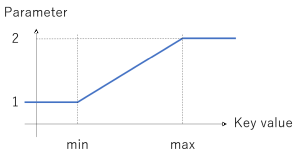Collaboration Using Global Variables #
MMDAgent-EX has an internal storage area for global variables, and you can assign, change, and reference values using .fst scripts, .mdf configuration files, or messages.
Global variables are a collection of key-value pairs. Below, we will explain how to assign and reference values.
Assigning with .mdf #
All pairs written in the following form are assigned and held in the global variable as key-value values at startup.
KeyName=String
You can retrieve the setting value later, and you can also define arbitrary key-value values unrelated to the settings in the .mdf.
Referencing & Assigning with .fst #
In .fst, you can reference the value of a global variable anywhere in the form of ${%KeyName}.
The value is evaluated not at the time of .fst load, but at the time the line is executed.
The following is an example of assigning the value of the key “ModelName” of the global variable as the model alias name, which is the first argument of the MODEL_ADD message. (See the
explanation page for handling variables in .fst)
0 LOOP:
<eps> MODEL_ADD|${%ModelName}|...
You can also use the value itself as a condition, as shown below.
LOOP LOOP:
${%KeyName}==string SYNTH_START|mei|...
You can also assign values using the additional field at the end of the line.
0 LOOP:
...
<eps> MODEL_ADD|mei|... ${%KeyName}=string
Assigning with Messages #
You can assign values by issuing a KEYVALUE_SET message.
Binding with MODEL_BINDFACE #
Another use for the
MODEL_BINDFACE message is to bind a morph not to a static value, but to a global variable. Morphs with a specified bind will then be controlled by the value of the bound global variable, with the morph changing in real time each time the variable’s value changes.
You can use this to provide a specific morph value from a .mdf setting, or to control a specific morph in real time from the outside by streaming in values with the KEYVALUE_SET message.
min, max are the minimum and maximum values of the global variable, and rate1, rate2 are the corresponding minimum and maximum values of the morph. Values below min are capped at rate1, and values above max are capped at rate2. The range in between is interpolated linearly. This is represented in the diagram below (where the horizontal axis represents the global variable’s value, and 1 on the vertical axis corresponds to rate1 and 2 to rate2).

You can unbind with the MODEL_UNBINDFACE command.